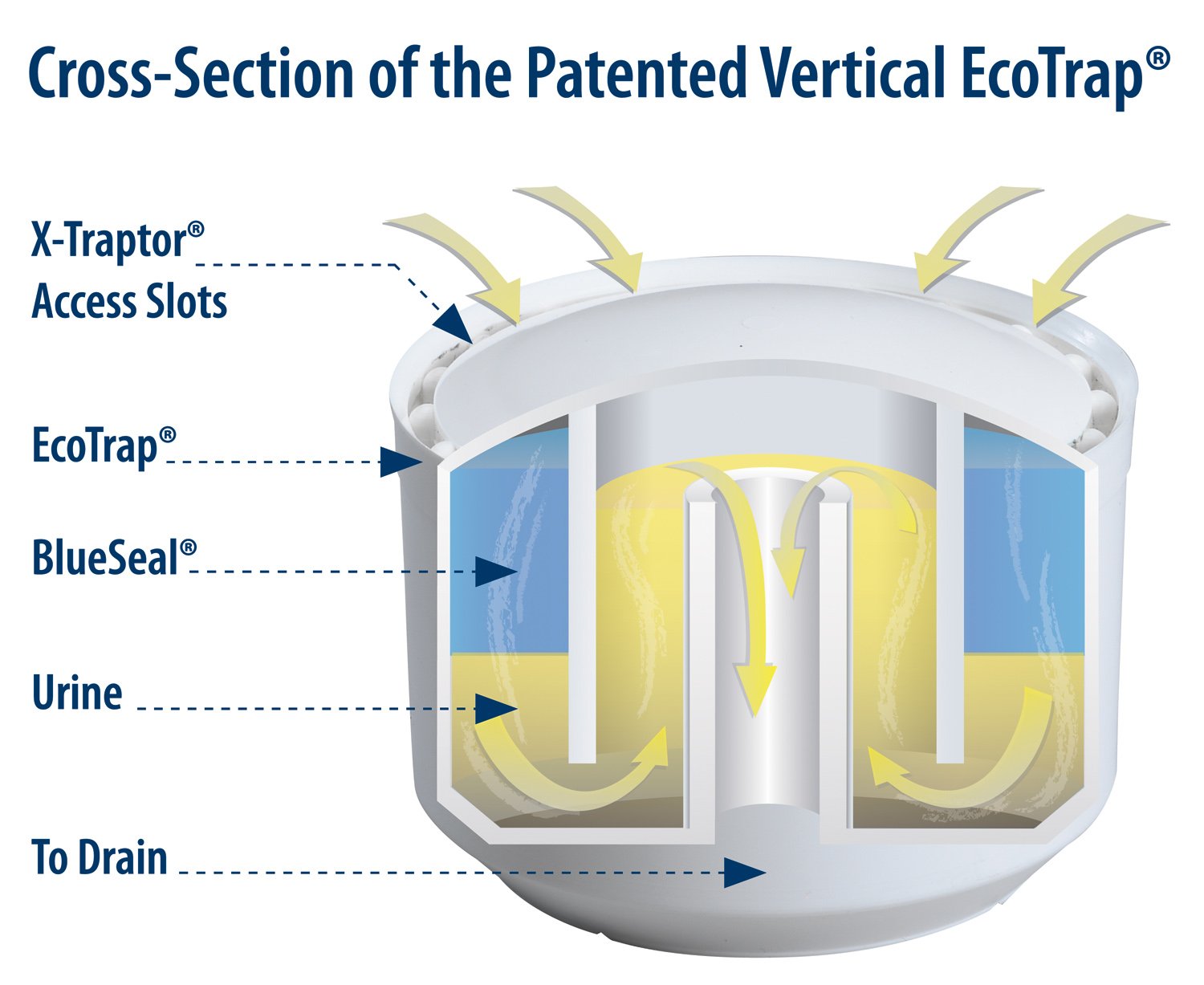At first glance, most no-water urinals look exactly like traditional, water-using urinals. However, a closer inspection shows they have two significant differences.
First, a conventional urinal has a flush valve – manually operated or automatic – at the top of the urinal. Waterless urinals do not because, as the name implies, they do not use water.
The second difference is when we glance at the bottom of the urinal bowl, a regular urinal may have a urinal screen installed. A waterless urinal has a trap or cartridge. This is a critical component of a waterless urinal; something similar is found in almost all no-water urinals.
The trap/cartridges are designed to keep sewer odors from being released into the restroom. However, because they play such an important role in ensuring the no-water urinal is operating properly, we should know a few more things about the trap/cartridges. For instance, it is filled with a sealant. To explain what a sealant is and the many roles it plays, let’s dig a bit deeper.
What exactly is a sealant?
The sealant is an oily, biodegradable liquid, which is lighter than urine, so it floats in the cartridge.
Why do the traps/cartridges need to be filled with a sealant?
The sealant helps seal away trap odors. About three ounces is all that is needed and can last several months.
What is the actual trap/cartridges made of?
They are made of various plastics. Some are recyclable, some are not.
Are all the traps/cartridges the same in no-water urinals?
They may vary in design, but perform, in principle, the same task. Most do require the use of a sealant. NOTE: While the different traps/cartridges are similar in functionality, it is important to only use the trap/cartridges designed for your waterless urinal.
Do they have to be changed?
Yes, they do need to be changed. Equate the trap cartridge with an air filter. Over time, soil builds up and it can clog. Therefore, it needs to be changed. As to frequency, building owners and managers need to know that some traps need to be changed – the old trap removed, and the new trap installed - more frequently than others. It all depends on the trap’s design.
Making matters worse, the ones that need to be changed the most frequently tend to be the costliest. It’s easy to compare the lifespans. While the exact lifespan of the trap can vary, the manufacturer will likely suggest how often to change the trap. Also, compare cartridge costs as there are vast differences, which of course make a budget difference over time.
How do you replace them?
It’s easy and should take less than 10 minutes.
Here are the five simple steps:
1. For standard cleaning procedure, put on a pair of nylon or rubber gloves per OSHA regulations.
2. Grab the tool that the manufacturer provided for removing the trap.
3. Use the tool to remove the trap. It may start dripping once removed, so have a trash bag or bucket handy.
4. Install the new trap, add some water for the sealant to float on, and fill it with the recommended amount of sealant, about three ounces.
5. If necessary, clean the area in the urinal where the trap was sitting.
Are there some troubleshooting things we should know about sealants, traps, and cartridges?
Urinal odors: Add 3 oz of sealant into the trap/cartridges.
Debris in the trap/cartridges: Just remove it. Debris should not damage the trap/cartridges.
Water was poured down the trap: There should be no reason to ever pour water into the trap/cartridges. However, if water has been poured in, it possibly flushed the sealant out. Add more sealant.
The urine is not draining through the trap cartridges: This simply means the cartridge is full and needs to be exchanged.
Waterless Co., Inc is a pioneer in water efficiency. We are the go-to company when it comes to reducing water consumption, understanding the many benefits of waterless urinals, and finding ways to use water more efficiently. For more information, contact a Waterless Co Specialist.










